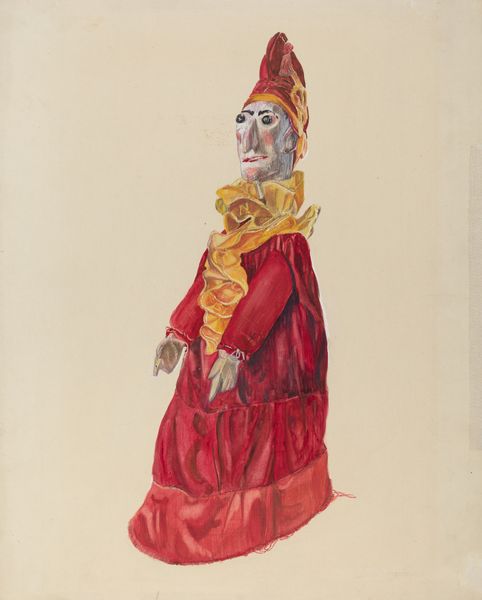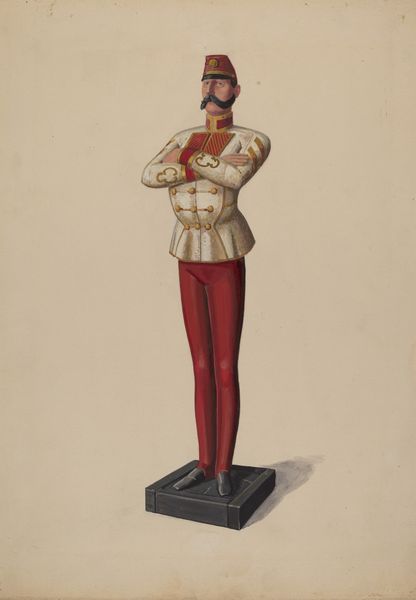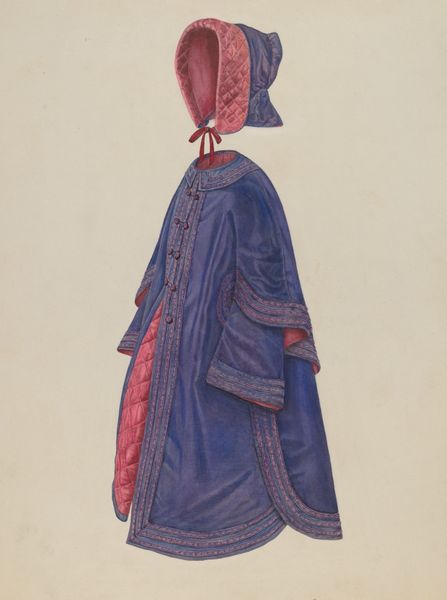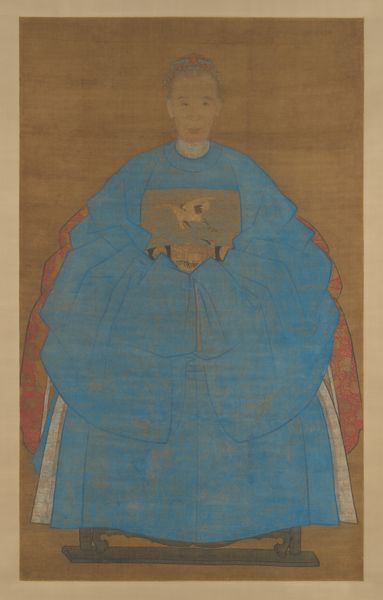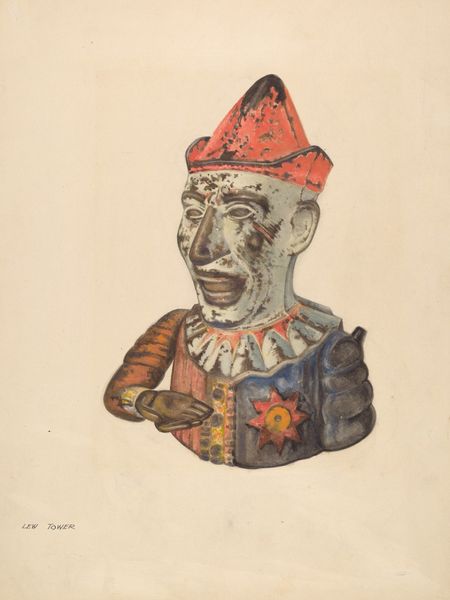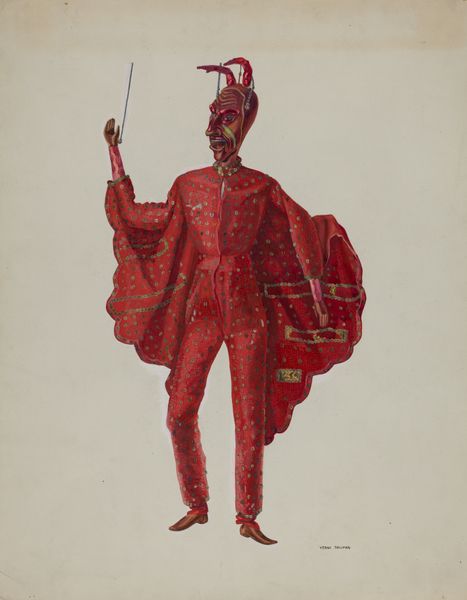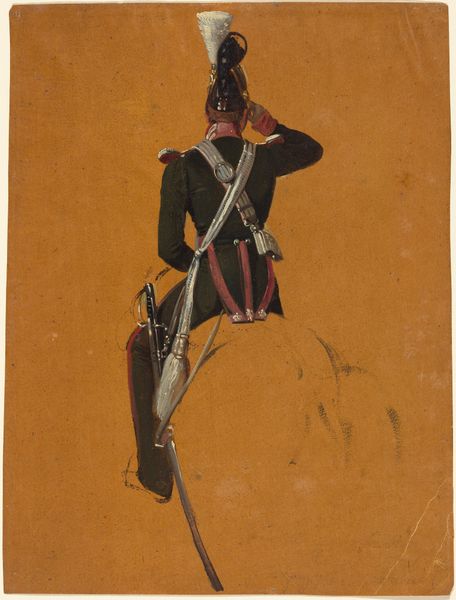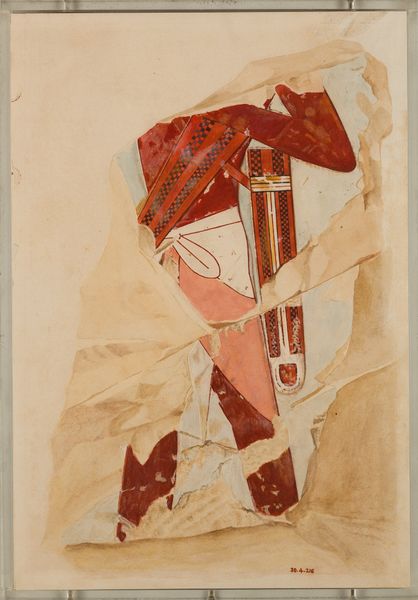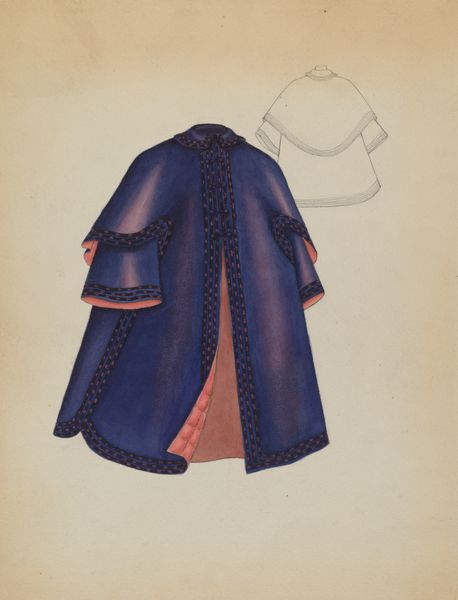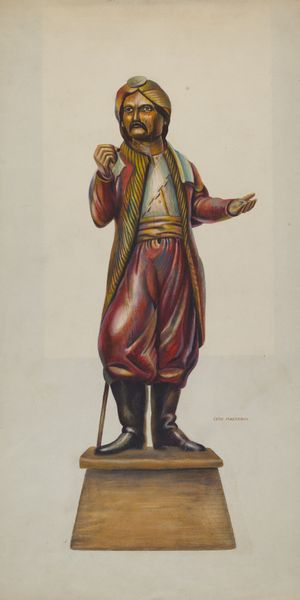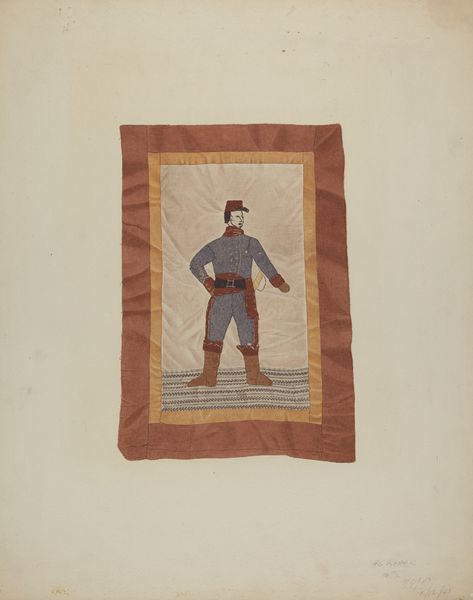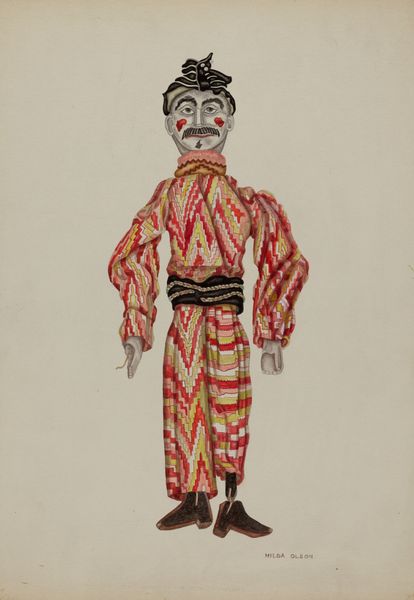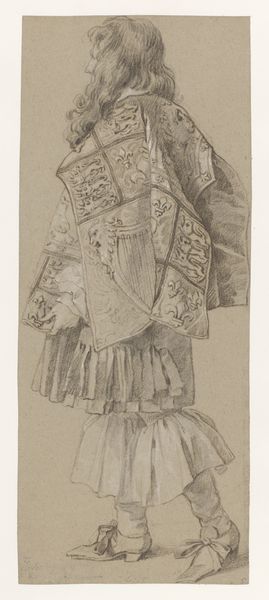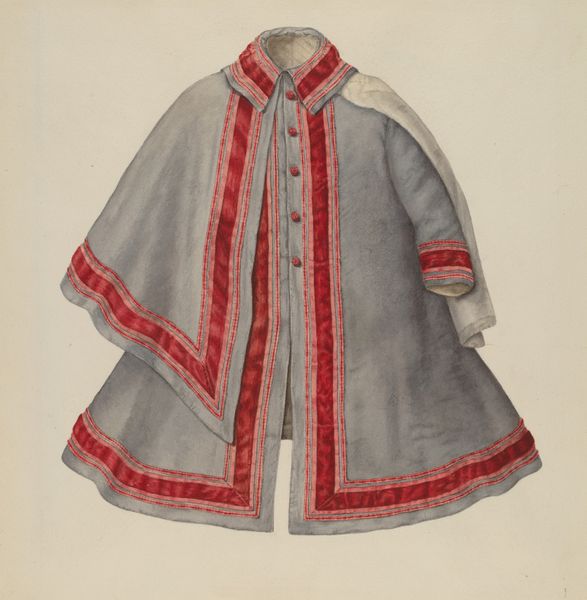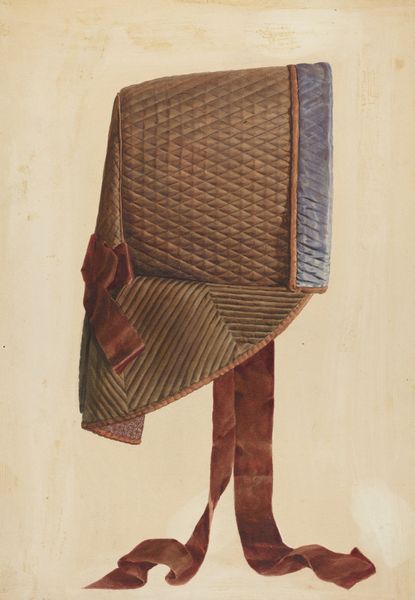
drawing, watercolor
#
portrait
#
drawing
#
watercolor
#
portrait reference
#
portrait drawing
Dimensions: overall: 25.5 x 22.7 cm (10 1/16 x 8 15/16 in.)
Copyright: National Gallery of Art: CC0 1.0
Curator: This watercolor drawing is called "Full Dress Uniform," made around 1936 by Bernard Krieger. Editor: It’s… disjointed, isn’t it? The bright red uniform floats against this pale ground, but it's headless, limbless – almost a costume waiting for someone to inhabit it. Makes you think of absence. Curator: Indeed. We can approach this composition as an arrangement of geometric forms: the cylindrical hat, the squared shoulders, the curve implied by the missing body—a study in how shapes intersect and define space within the frame. Editor: Maybe. But I see something more melancholy. The crispness of the lines, especially around the "22" on the hat and collar, contrasts with the softer washes of red in the jacket. It’s like a ghost of formality, all sharp edges trying to hold onto something fleeting. I get this wistful, almost theatrical feel. Curator: Interesting point. The number 22, repeated as it is, also invites structural analysis. It functions as a signifier, marking identity. Editor: I'd counter that it also amplifies that sense of phantom presence. Like, 'This is Uniform 22, prepared and ready, yet…where is its wearer?' Almost gives off the feeling that someone wasn't coming back, you know? Like a play, all the players, and no audience, or stage hands with empty costume. Curator: One could also interpret the colour palette—the strong reds, the deep blues—as expressions of patriotism or martial vigour, offset by the rather muted tones implying age. Editor: That's the interesting thing with symbols like these: They swing. One second you're struck by these regal military colors, and the next, a shadow is looming. But hey, it's all pigment on paper, after all, right? We each take something else out of it. Curator: Precisely, but let us recognize the compositional strength that makes this dialogue even possible. The drawing invites speculation and reflection upon complex visual cues and its capacity for signification. Editor: Maybe all it needed was some well placed stains to seal that meaning. Regardless, I’m glad we circled back. What’s next?
Comments
No comments
Be the first to comment and join the conversation on the ultimate creative platform.
